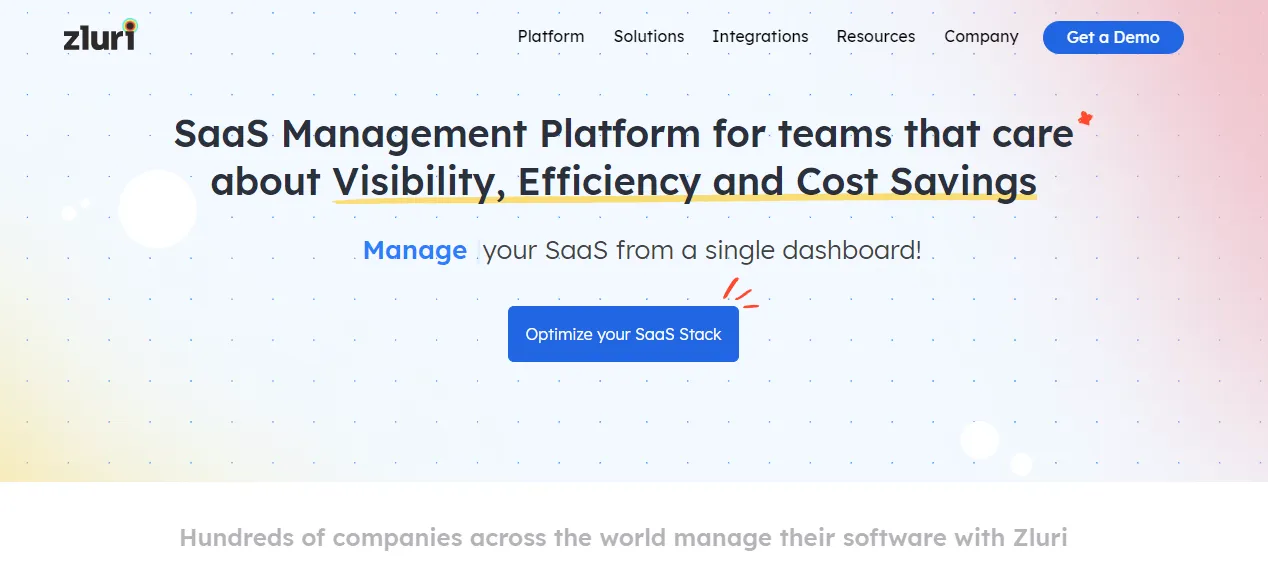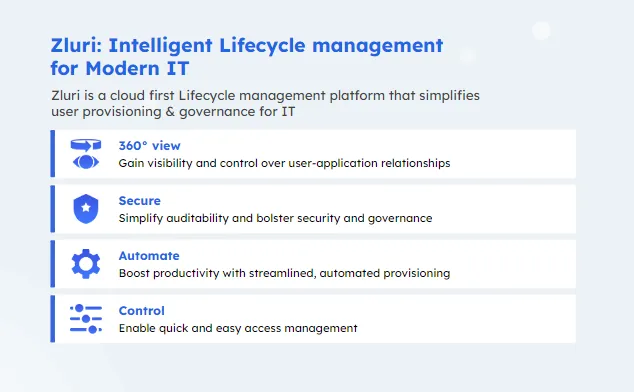"Identity access management: a critical need in today's digital landscape, but with challenges at every turn."
Yes, you read it right! Identity access management (IAM) is critical to modern information security. With increasing data breaches and cyber attacks, organizations must ensure that only authorized individuals can access sensitive information.
How do you ensure only authorized people get access to your sensitive information when granting dynamic access?
When it comes to identity governance, one of the biggest challenges for companies is to find out the right balance between security and efficiency in their organization.
As more and more employees work remotely, it can be difficult for organizations to ensure that only authorized individuals access sensitive information and systems.
It can be a complex and ever-changing field. Still, by staying aware of the current challenges and addressing them, organizations can better protect sensitive information and ensure compliance with regulations.
You may wonder why dynamic access grants are necessary for today's organizations. So, let's take a look!
Why is Dynamic Access Grant Crucial For Your Organization?
Dynamic access in Identity and Access Management (IAM) is the ability to grant the app access to an IAM user, group, or role in accordance with the context of the request. It includes details like the user's location, the time of day, or the IP address of the source. Instead of giving all permissions at once, you can grant granular access depending on a set of requirements and guidelines.
IAM's dynamic access grants are essential for several reasons, including
- Enhanced security: You may significantly decrease the attack surface and restrict users' ability to take unwanted actions by giving access to resources only when specific criteria are met. This can lessen the possible harm from a security breach and help prevent unwanted access.
- Granular access control: Granular access controls let you decide who can use each part of a program or app and what they can do when they do. This allows you to restrict access in a very granular way, reducing the possibility of unexpected consequences and boosting the security of your SaaS environment.
- Better compliance: By enabling you to impose particular policies and restrictions based on the circumstances of the request, dynamic access permits can help you comply with legal obligations and compliance standards.
- Improved employee experience: You may offer a better employee experience since dynamic access grants involve permissions in real-time according to user requirements. This allows you to create access rules based on contexts.
- Better auditing and governance: You better understand who is accessing what and when by logging access and keeping track of the access provided by dynamic policies. It can aid in compliance and security posture.
Without adequate access control, authorized and unauthorized users could gain and misuse sensitive data. To mitigate these threats, businesses should implement access control practices that restrict user access to sensitive data and systems only to those who need it to run their operations.
This article will discuss some of the best practices for overcoming identity access challenges and granting secured access throughout the organization.
6 Tip For Dynamic and Secured Access Grants from SaaS Operations Experts
The best way to find the proper access control for your business is to plan for both short-term and long-term access requirements and tasks and keep your employees and business secure at all times.
Access control best practices include some steps where you need to think about how you'll set up access control in your organization, what are the possible strategies to implement, and how you'll keep the system running as your business grows.
So, let's get started with 6 best practices to follow while granting access:
1. Monitor user access insights from a centralized portal
Organizations use many different systems and platforms, and ensuring access is appropriately managed across all of them can be tricky. This can be challenging, primarily if other systems use different authentication mechanisms and need centralized access management.
Therefore, it is necessary to have a centralized portal that allows for consistent management of access controls across an organization. This ensures that access policies are applied the same way to all resources and at the same level of security.
Managing access controls through a single portal makes it easier to manage and update access policies and track and audit access attempts.
Centralized access control management can help to ensure compliance with regulatory requirements such as HIPAA, SOX, and GDPR, as it allows you to document who has access to which resource, how the access was granted, and when the access was revoked.
Centralizing access control management makes it easier to distribute accesses and reduces the amount of work needed to manage access for each system and application. This can help both IT teams and end users be more productive.
Moreover, it reduces the risk of errors and inconsistencies. This can help to reduce the risk of security breaches and accidental data leaks.
Here, we would like to introduce Zluri, a SaaS management platform that gives you a 360-degree view of the organization's identity security on a large scale.

Zluri gives IT admins an overview of the organization's SaaS stack. It does this with 100% accuracy with the help of 5 discovery methods to discover and monitor your SaaS infrastructure.
2. Give Least Privileged Access
Privileged access is critical to the functioning of most organizations. However, it can also be a security risk if not properly managed. This includes ensuring that only authorized individuals have access to privileged accounts. A user with unlimited access can do more damage than one who can only do certain things with limited access. Therefore, the principle of least privilege access is crucial for organizations.
Using the principle of least privilege (PLP) can help with the following security and access control challenges:
- The least privilege concept limits the number of potential vulnerabilities and attack vectors by only allowing the minimal level of access necessary to carry out a specified task.
- Suppose an attacker manages to get access to a user's login information. In that case, the least privilege concept restricts the harm they can do by only granting access to essential services.
- The least privilege principle can assist firms in more readily complying with regulatory requirements by limiting access to only that which is necessary.
- Limiting accesses makes it easier to manage and audit accesses. It simplifies tracking and auditing of accesses and increases the visibility of potentially malicious access attempts.
3. Grant Role-based Access
Access controls based on individual user accounts can lead to consistent or effective access controls. However, this can create security vulnerabilities, as users may have access to resources and perform actions they shouldn't be able to. Further, managing access controls on a per-user basis can take time and effort to manage. This leads to inefficiency and an increased risk of errors.
That's where RBAC comes into the picture! Your business has several departments with different levels of responsibility. But, only some people need to get into every area. So, the best thing to do is set up a system where your employees' roles are clear and are given permissions based on their jobs.
Role-Based Access Control (RBAC) is a system of permissions that limits access to systems and data based on a person's role in an organization. This role is based on the user's seniority and what department they work in. When you make roles, make sure to check that the practices for each role are in line with regulations. For example, there are several roles under RBAC, along with their authorization levels, such as analysts, users, billing admin, IT admin, and super admin.
Everything gets much more robust when RBAC is added to the organization's access management. Since RBAC's primary goal is to control who can access and use resources and who can't, organizations use login credentials for authorization and authentication. This mitigates the risk of malicious attacks.
4. Adopt Multi-factor Authentication
Most single-factor authentication schemes rely on passwords, which have repeatedly been shown not to be an excellent way to protect an organization's identity.
Employees often choose passwords that are easy to guess or use the same passwords on multiple sites. Further, users often feel uncomfortable using a single-factor authentication system that only needs a password because passwords are easy to forget. It also takes time to find out what a password is.
Therefore, organizations must use and keep up with multi-factor authentication as part of their access management. The more steps IT admins add between a request for access and digital access, the more secure it stays.
Multi-factor authentication (MFA) verifies a person's identity, which requires more than one way to prove their identification. It usually involves a combination of what the user knows (like a password or PIN), what the user has (like a security token or mobile device), and what the user is (like a fingerprint or retina scan) (such as a fingerprint or facial recognition).
MFA helps solve problems with access management by adding an extra layer of security on top of a password or PIN. MFA makes it challenging for attackers to get into a system without permission because it requires more than one way to prove who you are. So even if an attacker gets a user's password through phishing or some other method, they still need another form of identification to get into the system.
MFA can also help find and stop suspicious activity by alerting the user or admin when someone tries to log in and letting them in. This can help find possible attackers and allow you to protect the system quickly.
Multi-factor authentication could also be used with other security measures, such as Network Access Control, Firewalls, Antivirus, and Intrusion Detection Systems, to make a complete security plan.
5. Implement a Zero-trust Policy
After the pandemic, more employees were working outside of the corporate network, which led to the use of multiple devices for different applications. So, organizations must fully adopt zero-trust access management to protect their most critical systems, such as ERP and finance systems.
Zero trust is a network security framework that is becoming increasingly important for every business. It is a security method that assumes that any user, device, or system that tries to connect to a network or its resources is only trustworthy once it can be validated otherwise. This is different from the traditional method, which is to protect the network's perimeter and trust any user or device that is inside the perimeter.
With a zero-trust policy, all resource access is controlled and needs authentication and authorization. This includes multi-factor authentication, device management, and network segmentation. The goal of zero trust is to limit an attacker's ability to move laterally within a network if they can compromise a device or user account.
By segmenting the network and limiting how systems communicate with each other, a zero-trust policy reduces the attack surface. It makes it harder for attackers to move laterally within the network. It usually gives organizations better visibility into the network, making it easier to spot suspicious activity and take action.
The policies are adaptable and flexible, so organizations can change access controls based on the threats they face and what they need.
6. Automate Provisioning Around the User Lifecycle
User provisioning becomes even more crucial as an organization grows. When there are a lot of users, it can be challenging to track who has access to what, who needs access and why, and who needs to have their access taken away.
Automating provisioning actions based on a user's lifecycle within an organization is imperative to improve the balance between security concerns and the employees' efficiency.
The user lifecycle usually begins when an employee gets onboarded or starts working for an organization and ends when the user leaves the organization. Between these events, many changes and access needs must be closely managed.
Onboarding is the first step in the user's life cycle. This is where a new employee or a non-employee like a contractor or a vendor gets their first accounts and access to suitable systems and applications. When a user is transferred, they may need new or different access after they have been onboarded.
Automating the onboarding process allows for a more streamlined and efficient process, reducing the amount of time and resources required to onboard new employees.
It helps you to reduce errors and inconsistencies in the data collected, ensuring that all new employees have the necessary information and documentation to start their job. In addition, it makes work easier and reduces the problems and delays with manually managing profiles and accounts.
Zluri is an intelligent lifecycle management platform that streamlines user provisioning and governance. It helps you automate the process of adding, updating, and removing users and managing their access.

Zluri supports 300+ direct integrations. This lets users get deep insights and automate the processes accordingly.
It can figure out and suggest with 100% accuracy what tools the new users will need access to based on their job title and department. This makes it easier for IT asset managers to find and set up tools.
Depending on the user's role, Zluri also suggests which groups and channels the user should join within each app at the onboarding time.








.webp)
.svg)














